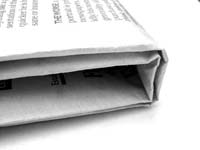Introduction
This guide is intended to help activists identify the key elements needed to produce a successful news release.
Considerations
- Why do you need media coverage?
- Who are your intended audience?
- Which type of media are you targeting?
- What are the key messages?
- Is the contact person to field follow ups from media/journalists clearly identified?
- Does this person have a set of talking points?
- Have you considered the context in which this press release is being issued?
Elements of a Succesful News Release
Engaging Headline
This is a must. Your headline is going to be the first thing the recipient journalist looks at; if it doesn’t look interesting, they will probably discard it. Keep the headline short, but add a couple of action words. The headline should encapsulate the central point of your news item. You will probably also want to mention the sponsoring organization (you) briefly. For example, rabble wanted to publicize the Activist Toolkit in a media release, the title might look something like this:
rabble.ca launches exciting new online tool for activists
In this headline we have the newsworthy item (the online tool), who it is coming from (rabble) and the target audience (activists).
Clear and Concise Points
The first thing that should appear is the date and place of origin (or the relevant location being talked about) of the release. Put your lead (what makes this newsworthy) in the first paragraph. Follow it up with several sentences that develop the lead, including the purpose behind this news and what the news actually is. Finally, be sure to outline any context, history and personalities involved, as well as the impact this news will have on the intended audience.
Quotes
Although you will have a contact person with a prepared set of talking points that journalists can get in touch with, it is a good idea to include some statements that a reporter can use as a sound byte. This will increase your exposure, as some journalists might not bother to call you for a followup, but would perhaps run a small newspiece if the information was provided in the initial release. It will also help if you are unavailable for any reason if/when they do try to contact you. For example:
“Toolkit developer Justin Saunders stated that the new feature ‘will greatly expand the collaborative possibilities of rabble’s website for its membership’”
Proper Formatting
Press releases should generally be one page in length. Multi-page documents with research, references and images should be able to summarize your message clearly on a separate, single page; this is what recipients are going to look at. Keep the page clean, written in standard sized lettering and plain text; don’t use strange looking, ‘artistic’ fonts. You may think it looks cool, but those on the receiving end will almost certainly disregard it. The goal here is to get your message read. Let your salient points do the talking, not your presentation.
Distribution
In order to determine where and to whom you need to distribute your press release, you should return to your initial considerations – particularly the intended audience and which type of media you are targeting. If you know your audience and the type of media you are interested in, you should be able to generate a list of media outlets and key contacts to disseminate your news release to. These will likely include newswires (CP, Reuters, AP, CUP etc.) and the major media outlets. Send your release as early in the day as possible.
When dealing with mainstream media organizations, the three established methods of distribution are mail, fax and e-mail (mail may still be useful particularly if you have a multi-page document – see formatting above). When using these methods, you should always be sure to follow up and make sure the intended recipients have received the news release.
In addition, emerging telecommunications(mobile) technology and online media (social networking sites like Facebook, sharing sites like YouTube and collaborative new media sites such as rabble itself) provide additional outlets. When using these methods, you should be sure to provide a contact point such as a website with a ‘pressroom’ area that these users can easily access and share with others.
Related Nodes



